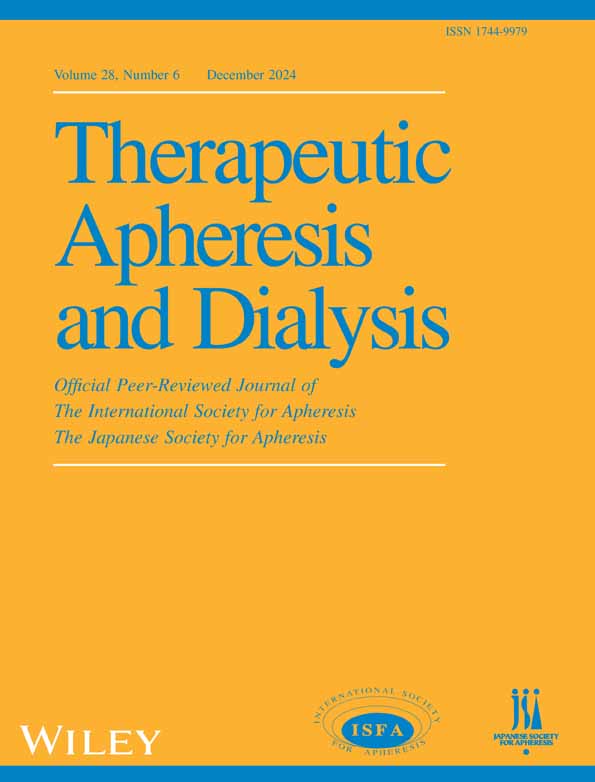Examination of drug removal profiles in patients undergoing therapeutic plasma exchange: A retrospective study
Abstract
Introduction
Therapeutic plasma exchange (TPE) eliminates disease-contributing substances but may also affect drug concentrations. This study aimed to assess the prevalence of prescription drugs removable via TPE by reviewing patient medication histories.
Methods
A retrospective, single-center study was conducted from January 1, 2021 to December 31, 2022. The study included 244 patients undergoing 1087 TPE sessions. Drugs prescribed to patients on TPE days were categorized as “yes” (probably removable), “maybe” (possibly removable), and “no” (unlikely removable) regarding their removability via TPE.
Results
Among 3966 prescriptions, 556 (14.0%) were analyzed, with 21.8%, 36.5%, and 41.7% falling into the “yes,” “maybe,” and “no” categories for removability. Although only 14.0% were categorized, 83.6% of patients received at least one analyzable drug. Among them, 83.8% had at least one potentially removable drug.
Conclusion
Real-world data highlights the need for caution in drug treatments during TPE to ensure optimal therapeutic outcomes, particularly for specific drugs.
CONFLICT OF INTEREST STATEMENT
The authors declare no conflict of interest.
Open Research
DATA AVAILABILITY STATEMENT
All data generated or analyzed during this study are included in this published article.




